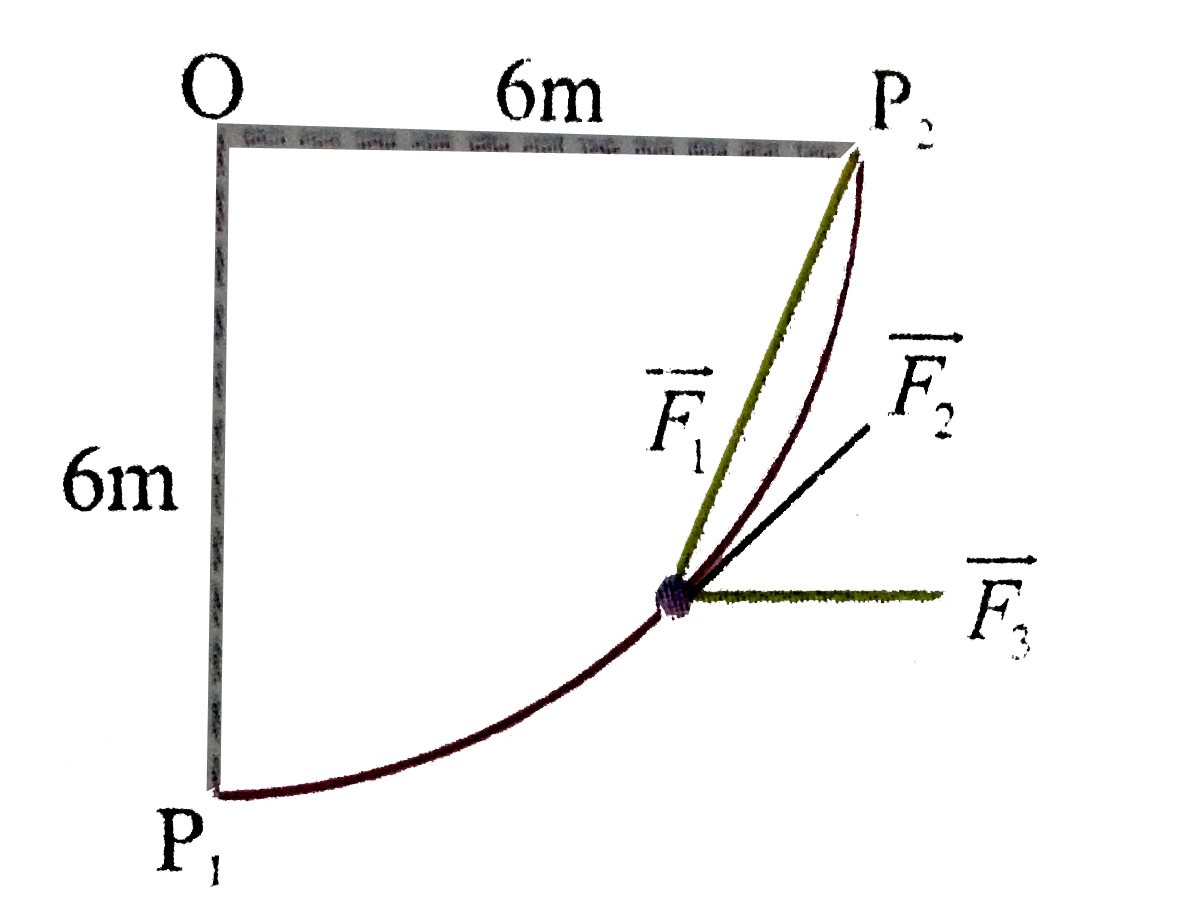Three concurrent force are F1,F2 and F3. Angle between F1 and F2 is 30∘and between F1 and F3 is 120∘. Under these conditions forces cannot remain in equilibrium.
At least one angle should be greater then 180∘.
If both Accertion and Reason are true and the reason is correct explanation of the Assertion.
If both Accertion and Reason are true but reason is not the correct explanation of Assertion.
If Assertion is true, but the Reason is false.
If Assertion is false but the Reason is true.
The correct Answer is:A
If three force are above a straight line (say AB)., then three should be some force below the line AB also to make their resultant =0.

Similar Questions
If three forces −→F1,+−→F2and−→F3 are represented by three sides of a triangle and −→F1+−→F2=−−→F3 , then these three forces are concurrent forces and satisfy the condition for equilibrium .
Statement II : A triangle made up of three forces →F1,→F2and→F3 as sides taken in the same order ,satisfy the condition for translatory equilibrium . In the light of the above statements ,choose the most appropriate answer from the options given below :
View SolutionThe correct relation between magnitude of f1 and f2 in above problem is :
(A) f1>f2 (B) f2>f1 (C )f1=f2 ( D) not possible to decide due to insufficient data.
View Solution
Knowledge Check
Three equal charges are placed on the three corners of a square. If the force between q1 and q2 is F12 and that between q1 and q3 is F13, then the ratio of magnitudes (F12/F13) is
A1/2B2C1/√2D√2Two forces F1 and F2 are acting on a body. One force is double that of the other force and the resultant is equal to the greater force. Then the angle between the two forces is
Acos−1(1/2)Bcos1(−1/2)Ccos−1(−1/4)eDcos−1(1/4)Two force F1 and F2 are acting on a body. One force is double that of the other force and the resultant is equal to the greater force. Then the angle between the two forces is :-
Acos−1(1/2)Bcos−1(−1/2)Ccos−1(−1/4)Dcos−1(1/4)
When forces F1 , F2 , F3 are acting on a particle of mass m such that F2 and F3 are mutually prependicular, then the particle remains stationary. If the force F1 is now rejmoved then the acceleration of the particle is
View SolutionThree identical charges are placed on three vertices of a square. If the force acting between q1andq2 is F12 and between q1andq3 is F13 then F13F12= ________.
View SolutionIn above example correct relation between magnitude of f1 and f2 is
View SolutionA smooth track in the form of a quarter circle of radius 6m lies in the vertical plane. A particle moves from P1 to P2 under the action of forces →F1,→F2 and →F3 Force →F1 is 20N, Force →F2 is always 30N in magnitude. Force →F3 always acts tangentiallly to the track and is of magnitude 15N. Select the correct alternative (s) :
 .
.
View SolutionTwo forces of mangitude F1 and F2 are acting on an object.The magnitude of the net force Fnet on the object will be in the range.
View Solution
